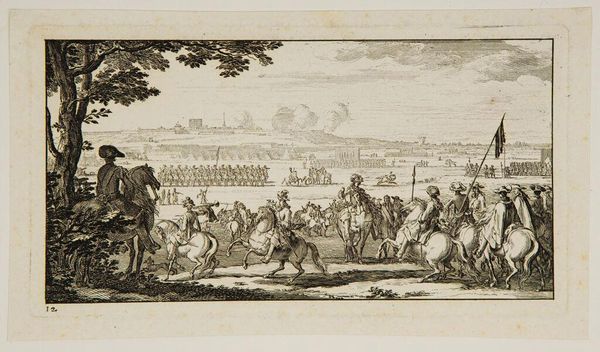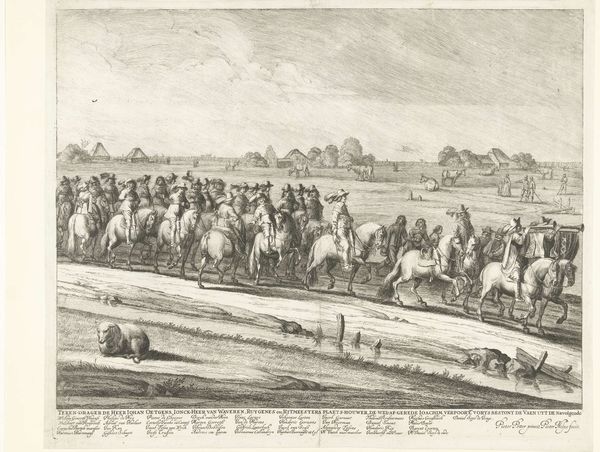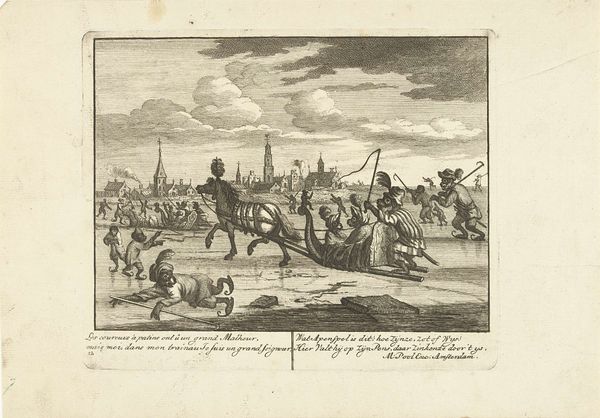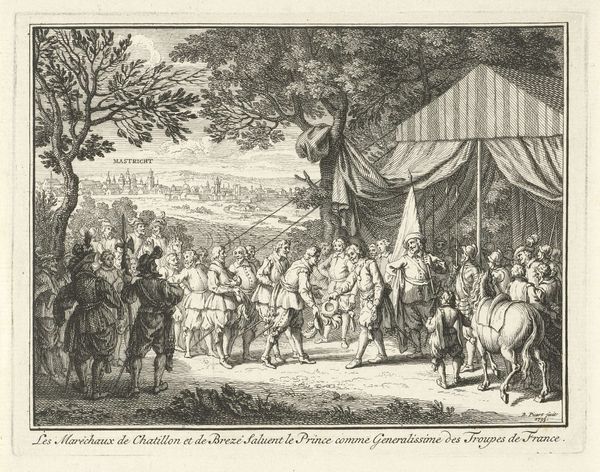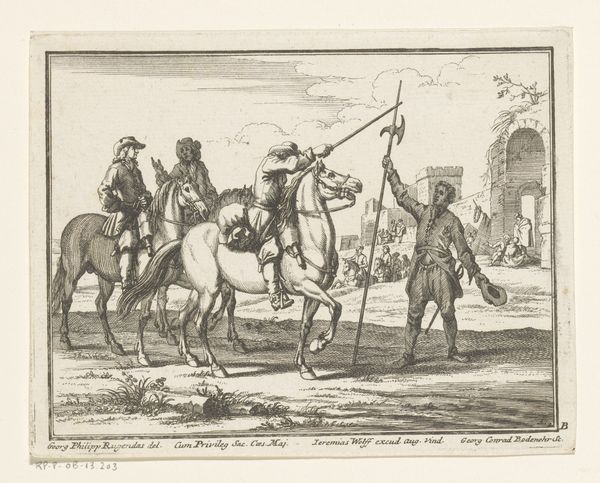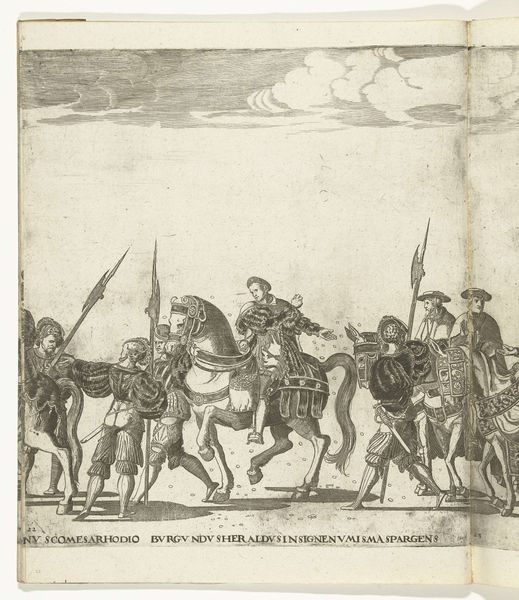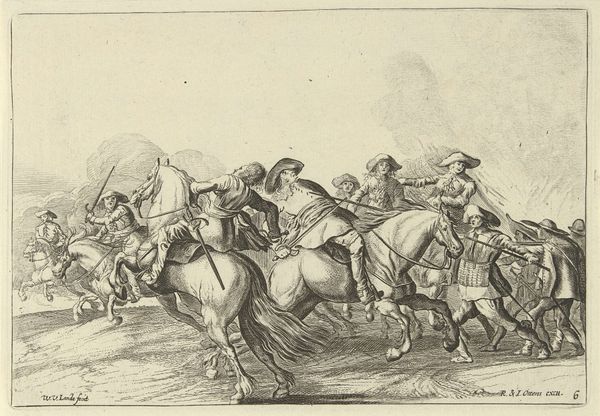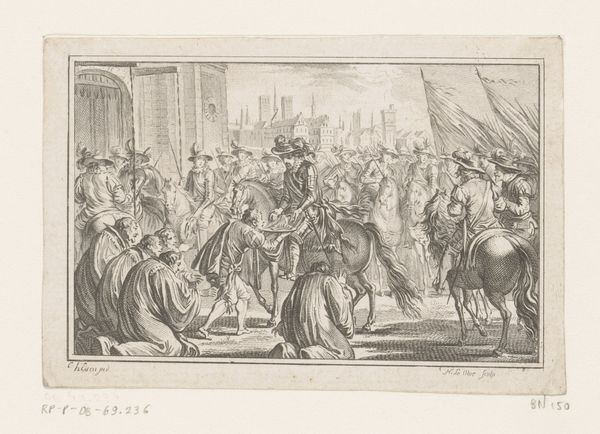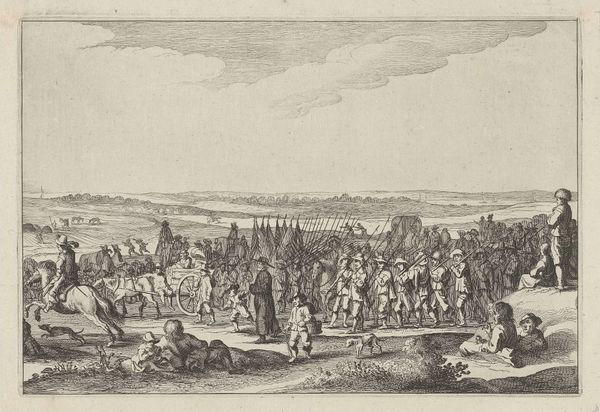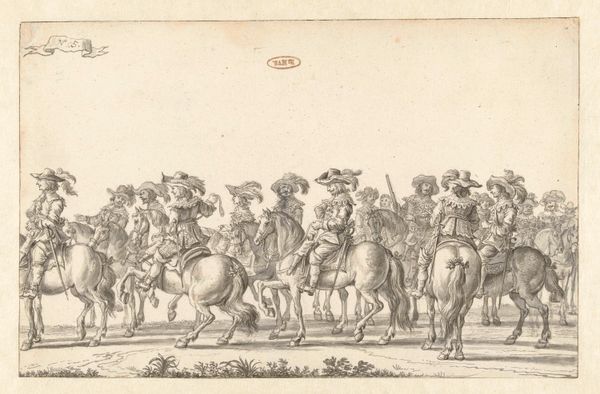
Vertrek van het Spaanse garnizoen uit Huis te Gennep (rechterhelft), 1641 1641
0:00
0:00
drawing, print, pen, engraving
#
drawing
#
dutch-golden-age
# print
#
landscape
#
pen
#
history-painting
#
engraving
Dimensions: height 144 mm, width 384 mm
Copyright: Rijks Museum: Open Domain
Curator: This is an engraving titled "Vertrek van het Spaanse garnizoen uit Huis te Gennep", or "Departure of the Spanish garrison from Huis te Gennep", created in 1641 by Balthasar Florisz. van Berckenrode. It captures a specific moment in Dutch history, marking the end of Spanish occupation. Editor: Wow, my first thought is just how incredibly detailed it is! Even at this small scale, I can practically feel the weight of those banners and hear the clatter of hooves on the road. There’s almost a somber, reflective quality to the scene, don’t you think? Curator: I do. It's fascinating to consider the symbolic weight this event held. The departure of the Spanish garrison represented a shift in power, resonating deeply with Dutch aspirations for independence during the Eighty Years’ War. You see it visualized as a meticulously ordered departure. Editor: Exactly! And it really speaks to the artist’s skill, capturing not just the literal departure, but the underlying power dynamics at play here. Are these proud victors or humbled defeated soldiers? Curator: The composition leads one to conclude defeated. The engraving provides us with a lens to examine military occupation in the 17th century through the specific lens of Dutch nationhood, which certainly adds layers of meaning when you consider its place within the Rijksmuseum collection. Editor: I love how historical art like this offers a way to access past emotions, political strategies and anxieties. Thinking about what it meant for people then compared to now...It is a kind of haunting echo. Curator: Absolutely. Understanding this artwork necessitates grasping the historical climate surrounding Dutch nationhood. Art becomes an invitation for re-evaluating these moments, engaging the long history of imperialism. Editor: Seeing such painstaking rendering with lines really does get you in touch with history. Thanks for making those connections to the piece’s context; otherwise I would’ve only been stuck with my feelings. Curator: Precisely, and that’s what makes art viewing such an enriching dialogue: historical context meeting the imaginative, personal response.
Comments
No comments
Be the first to comment and join the conversation on the ultimate creative platform.
